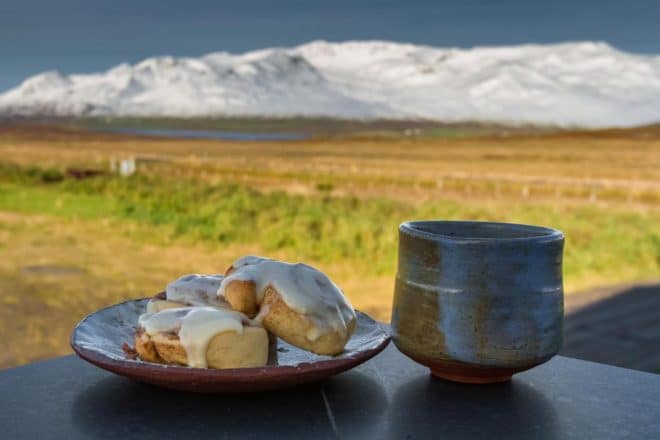
Typically, when people think of Iceland, their minds jump to its many extraordinary natural attractions; geysers, glaciers, countless waterfalls and out of this world landscapes, just calling out to you to explore them. However, if you look a little more closely, you might be amazed to learn that Iceland also boasts a unique food-world waiting to be devoured.
If you’ve heard anything about Icelandic cuisine, it’s not likely to be that appetising. Food in Iceland has gotten a bad reputation. Many visitors arrive in Iceland looking to sample the infamous fermented or, “rotten”, shark but, don’t worry, there’s a lot more to it than that, and trust me, that truly is the worst of it!
What might surprise you is the national obsession with hotdogs, ice cream and liquorice. And once you’re in on all the secrets, you’ll be cramming your suitcase with edible souvenirs.
There are many hidden gems inside Iceland’s culinary culture which has seen an explosion in variety and finesse in recent years. However, it is most likely the traditional dishes and local classics that you will find the most exciting and uniquely delicious.
So get ready to tickle your tastebuds and expand your palette as this article walks you through everything you need to know about food in Iceland.
Traditional Icelandic Food

Despite its natural beauty, Iceland has always been a harsh environment to survive in. Weather conditions could be menacing for settling farmers and the stark volcanic landscapes inhospitable for agriculture. For centuries, Icelanders relied mostly on fish, skyr, lamb, and the few root vegetables that were possible to grow domestically.
Given these severe circumstances, traditional Icelandic food is elegant in its simplicity, allowing its strong natural flavours to speak for themselves.
Fish
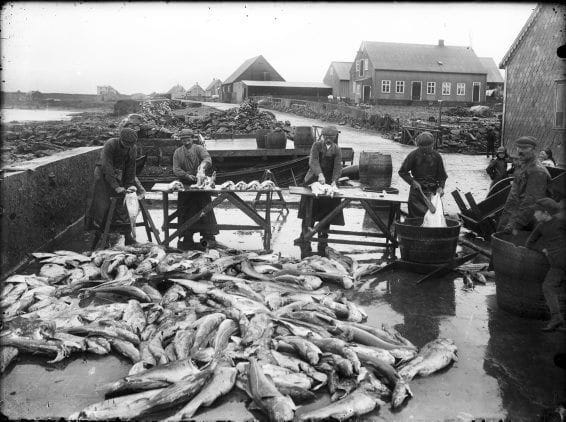
Unsurprisingly, being an island nation, Iceland boasts delicious seafood. The country’s history and its food are closely bound to the sea.a. Fishing is Iceland’s largest industry and there are many different species on offer.
There are countless seafood restaurants across the country and most places will serve cod, haddock, ling, monkfish, and, of course, salmon. Arctic char is a speciality that is not widely available in a lot of other places and it is well worth a try. It is called ‘bleikja’ in Icelandic from the word for pink after its colouring.
What Icelanders call humar or “lobster” is actually langoustine, a close cousin to lobsters, renowned for its tasty, tender meat. It’s mostly caught in the southeast and if you pay a visit to the glacier lagoon, Jökulsárlón, be sure to try the lobster ‘hotdogs’ from the adjacent food truck.
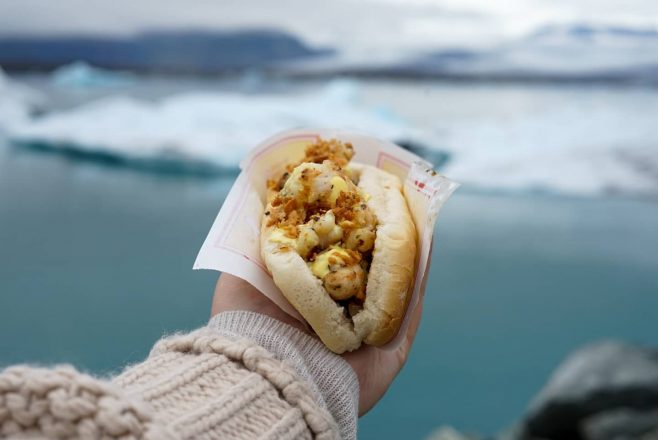
Fish and other seafood still feature heavily in the Icelandic diet and the country’s top chefs are constantly finding novel and delectable ways to honour the sea’s rich treasures. Don’t leave Iceland without trying the fish.
Harðfiskur
Preserving fish was essential for the survival of Icelanders and a popular method was to dry fish. Locals call it “harðfiskur” and it’s a type of fish jerky which makes for an excellent snack. Icelanders often eat it with butter spread across it and it makes for the perfect nibble for a day out, albeit a bit of a smelly one.
Icelandic Lamb
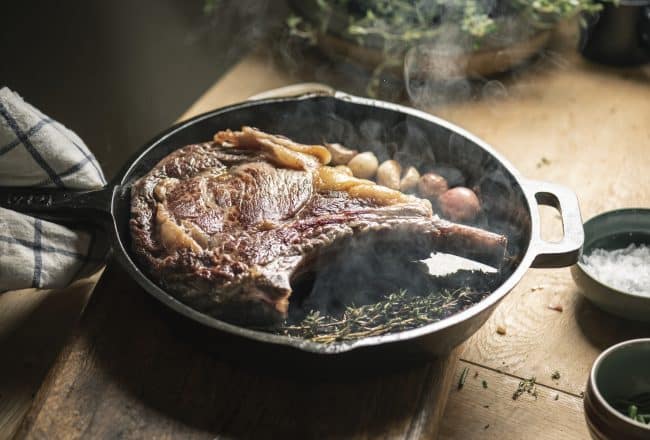
Renowned the world over, Icelandic lamb is full of flavour and is exceptionally lean. Sheep are born indoors in the spring and, shortly after, are released into the wild to roam freely in mountain pastures. Their diet of grasses, berries, herbs, and seaweed is rich in nutrients and contributes to their rich and unique flavour. Animals are raised free of growth-promoting antibiotics and hormones.
Icelanders love their lamb and no part of the animal goes to waste. If you’re in a restaurant, there will most certainly be a lamb dish on the menu, so be sure to sample it for yourself.
Plokkfiskur
Plokkfiskur is an Icelandic fish pie or stew made of white fish, potatoes, onion and it’s often topped with cheese. Traditionally, Icelanders eat it with “rúgbrauð”, Icelandic rye bread which is sweet, dense and delicious smothered in butter and fish. A true comfort food, this dish is guaranteed to warm and fill you up and it’s decadently moreish.
Kjötsúpa
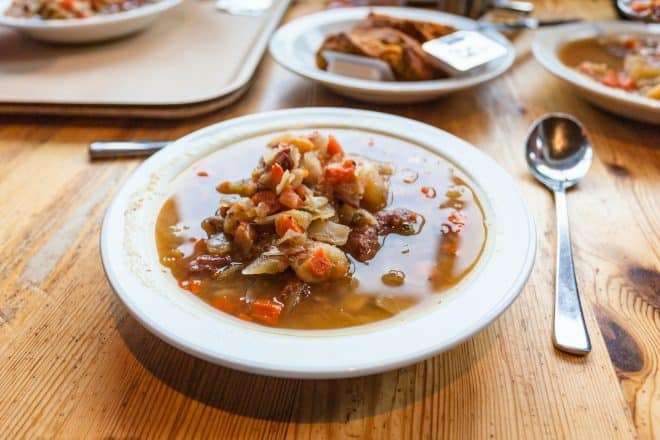
Another traditional Icelandic staple is kjötsúpa, or, ‘meat soup’ which is made from the more grisly cuts of lamb and root vegetables. You can grab a bowl of this flavoursome soup at many tourist attractions across the country as well as Reykjavík’s flea market, Kolaportið. It’s a hearty and often inexpensive dish to load up on before doing more exploring.
Hangikjöt
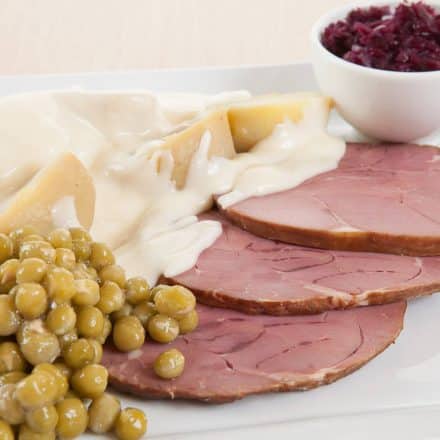
Hangikjöt is smoked lamb, and it could very well belong to the next category of ‘Strange Icelandic Foods’ as it’s rarely found elsewhere in the world. “Hangikjöt” translates to “hung-meat”, and it is bursting with flavour. In the old days, curing meats with smoke was a standard method to preserve foods, and it is still widely eaten today, mainly at Christmas.
During the holiday season, a hunk of hangikjöt is boiled and left to cool before being warmed up and served with a rich white sauce, potatoes, tinned green peas and pickled red cabbage. The distinctive smell of hangikjöt signals to any Icelander that it’s Christmas time and approximately 90% of Icelanders eat it at least once during the holiday season.
Cold slices of hangikjöt are available all year round and it is a popular lunchmeat. You can find premade hangikjöt sandwiches accompanied by a carrot and pea mayonnaise mix which sounds weird but is rather good. Another tradition is to eat cold slices on heavily buttered “flatkaka”, a type of thin rye flatbread that arguably is a delicacy in itself.
Skyr
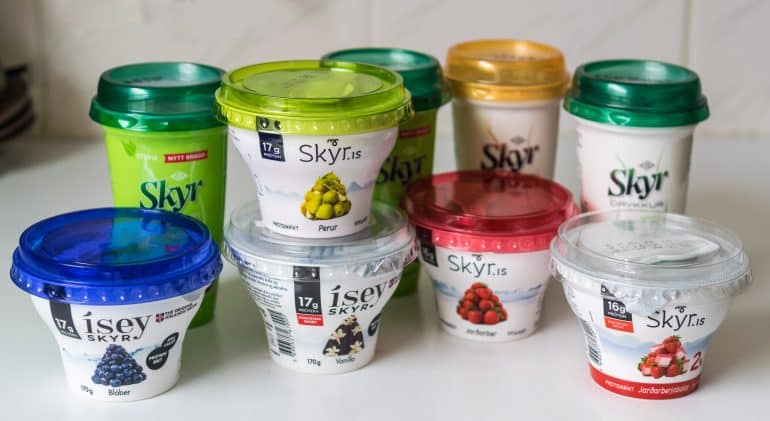
Skyr is technically a cheese but it resembles more yoghurt in both texture and flavour. It has also become better known internationally in recent years as a low-fat, high protein, and scrumptious snack. Icelanders have eaten skyr for centuries and you simply must try it while you’re here. Some Skyr germ cultures have been passed from generation to generation and it is a highly prized member of the pantheon of Icelandic staples.
Icelanders eat Skyr for breakfast, in their smoothies , for lunch, and as a dessert. It’s especially good with some freshly picked Icelandic berries and cream. You can pick up Skyr from nearly anywhere and the single-serving pots often come with a fold-out spoon.
Berries
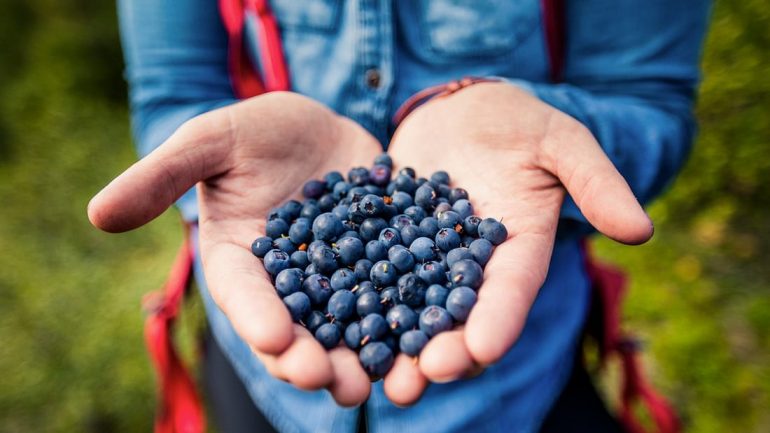
Bringing us nicely onto berries. Given the country’s dearth of trees, there aren’t many native fruits to Iceland but berries are abundant. Redcurrants, blueberries (actually two different types of bilberry but largely referred to as blueberrieshere), crowberries, stone brambleberries and even wild strawberries can all be found growing in the Icelandic countryside.
Icelanders can’t get enough of them and many families go berry-picking while they’re in season, usually from August to mid-September. Stockpiles are hoarded in freezers for later use in desserts and smoothies or to be eaten with Skyr. There’s a rich tradition of making jams and jellies which are the perfect accompaniment with cheese or sometimes lamb.
Strange Icelandic Food
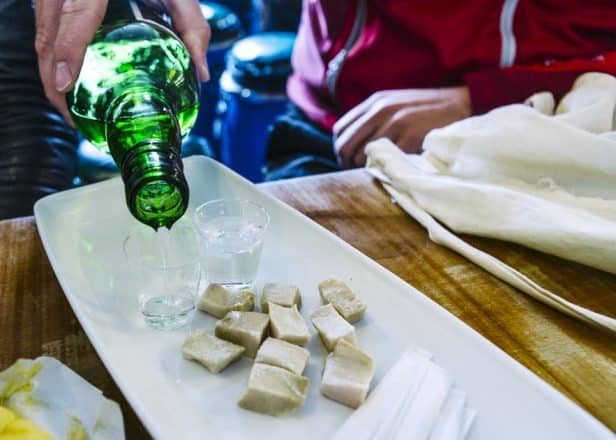
Now we’re getting to the juicy stuff. Back in the old days, food was scarce so Icelanders let nothing go to waste. They also discovered some pretty ingenious ways to preserve certain foods to make them last longer.
Fermented Shark
“Hákarl” is fermented shark meat (sometimes called “rotten shark”), usually from Greenland sharks. When fresh, this meat is poisonous. It is only safe to eat once it has been fermented in the ground for 6-9 weeks and then hung to dry for 4-5 months.
It is served in little cubes often with an accompanying shot of the Icelandic aquavit, Brennivín. Hákarl has an ammoniacal flavour and even stronger odour so one tip is not to smell it before you try it. Once you get past the initial shock to the senses, the meat has a rich nutty taste that some people genuinely relish. Many have likened it to smelly French cheese, as the texture is quite similar.
Popular mythology surrounding hákarl is that fishermen would pee on the meat before it was buried. This folklore most likely emanates from the meat’s ammoniacal nature which originates from the high urea content of the shark meat rather from seamen’s toilet habits.
Many restaurants will have some hákarl for you to try or you can sample this strange delicacy in the food section of Reykjavík’s flea market, Kolaportið or at Bjarnarhöfn Shark Museum (featured in the video) on the Snæfellsnes Peninsula.
Icelandic Haggis
Slátur is Iceland’s answer to haggis or black pudding. It is made from sheep’s blood (blóðmör) or liver and kidneys (lifrarpylsa), suet, oatmeal, rye, and spices. Slátur is quite common and Icelanders usually have it alongside boiled potatoes and mashed turnips (neeps and tatties to the Scottish). It is also popular with rice pudding, covered in sugar and cinnamon (Hey, we are in the “Strange Icelandic Food” section, what did you expect?).
Pickled Ram’s Testicles
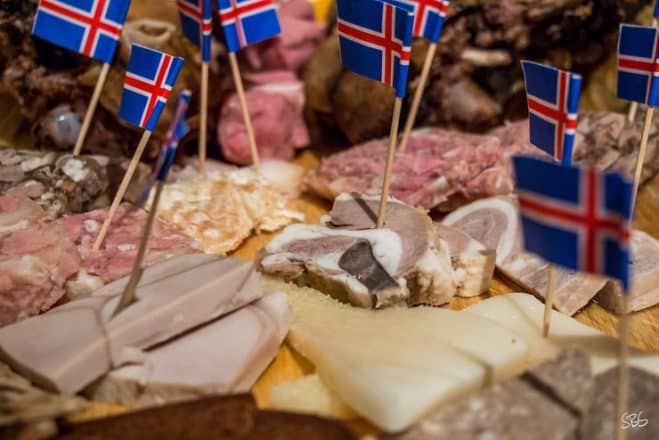
“Hrútspungar” is pickled ram’s testicles and they are boiled and cured in whey. This is not widely eaten today except for at certain festivals, and you will get funny looks if you ask after this in a restaurant.
Boiled Sheep’s Head
“Svið” is a very traditional Icelandic dish of boiled sheep’s head. The hair is singed off giving the skin a very particular flavour. It is then served cut in half with the brains removed. Icelanders who still eat this dish often have a preference for their favourite part, be it the eyes, skin, or tongue.
This dish is more likely to be eaten by those that live in the countryside. However, you can still find it in Reykjavík. Just go to any butcher or meat counter and you will find it, sometimes even hot and ready to eat. If you dare.
Eating-Out in Iceland
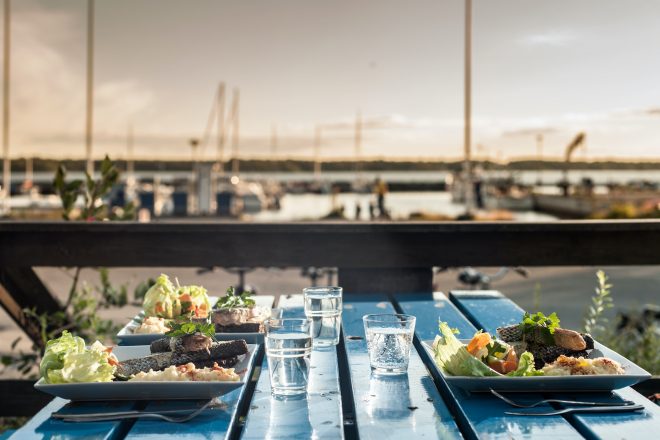
Icelandic cuisine and fine dining are constantly evolving and there’s an abundance of restaurants to choose from, especially in Reykjavík. Eating out in Iceland can be expensive but I highly recommended that you sample at least one restaurant during your stay, and here are a few tips for when you do.
Order the fish of the day. This option is often a cheaper way to sample wild Icelandic fish and it will often include local in-season herbs and vegetables.
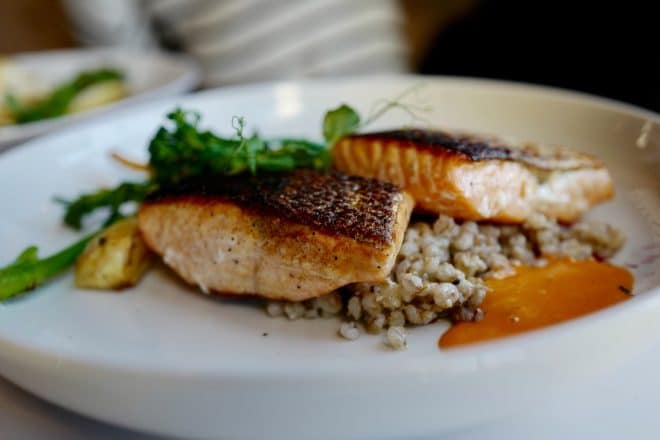
It’s customary in Iceland to pay your bill at the cash register instead of at your table. So, instead of asking for your bill, be in the know and get to the till first.
You might have heard that tipping is not customary in Iceland and it isn’t. Staff are paid well and your bill total is the final amount to pay with all taxes included. That being said, any server will greatly appreciate a tip so if you want to reward excellent service, by all means, tip.
Fast Food in Iceland
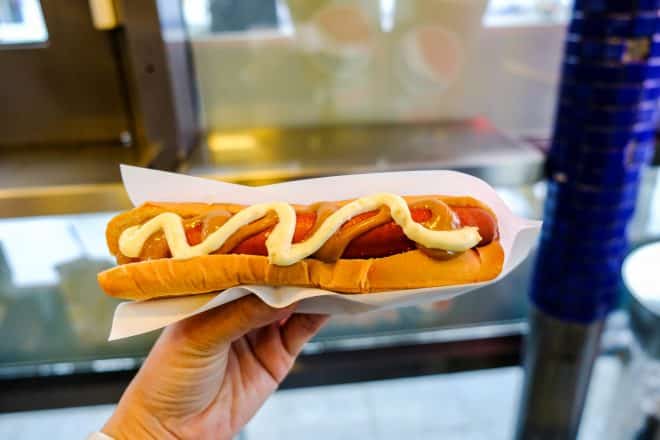
Icelanders love their fast food with hotdogs coming in first place in popularity and arguably flavour.
Icelandic hotdogs are unique in many ways. The dog itself is a blend of lamb, pork, and beef with the lamb giving it a distinctive taste. If you order a hotdog, it’s recommended that you try one with everything. This includes; crispy fried onions, raw onions, ketchup, ‘hotdog mustard’ which is sweet but simultaneously dry and granular, and finally, remúlaði, a mayonnaise-based vegetable relish.
This winning combination is a culinary masterpiece and you simply must try one while you’re here. There are countless hotdog stands and they are also sold at gas stations throughout the country. Not only are they delicious but they’re also relatively cheap.
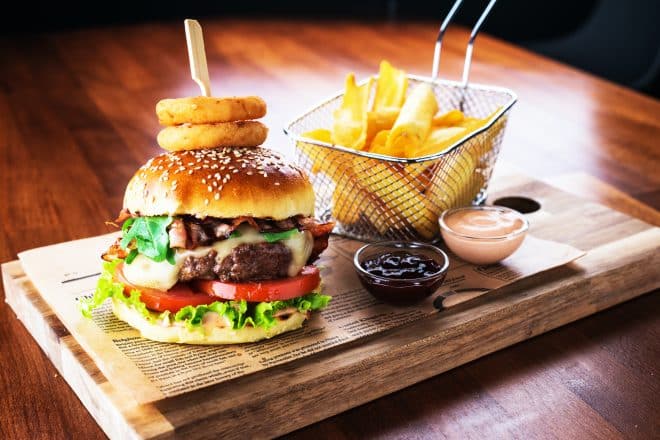
Icelanders are especially fond of burgers with fries though you will not find McDonald’s here. However, burgers are guaranteed to be on the menu at any mid-range restaurant, providing a perfect option for any children or picky eaters you might have with you. Get the full Icelandic experience and be sure to get some cocktail sauce to dip your fries in. This is a blend of ketchup, mayonnaise and seasoning and many Icelanders couldn’t imagine eating fries without it.
Pizza is also widely popular and the franchise Dominos does particularly well in Iceland. It is one of the few places that provides reliable delivery service in Reykjavík and a few other larger towns. Another famous franchise doing well in Iceland is Subway, with 16 restaurants located all over the country.
There’s no Deliveroo or Uber Eats in Iceland and the few places that offer delivery have very tight windows of operation; often closing before 11 pm.
Vegan and Vegetarian Food in Iceland
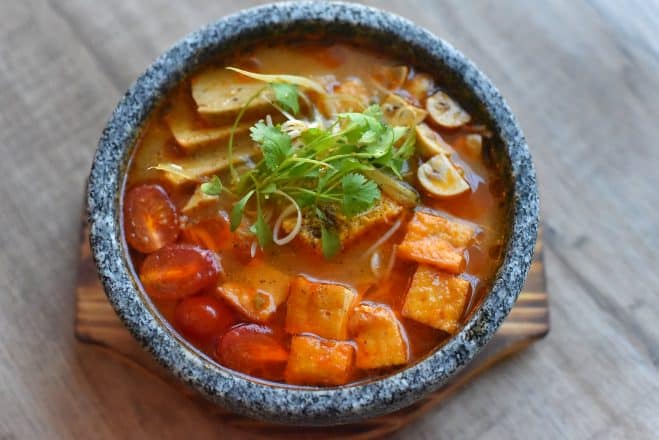
It’s fair to say that most options listed so far are not very vegan or vegetarian friendly, and, up until quite recently, it was very difficult to survive in Iceland as a vegetarian, and close to impossible for a vegan. Times have changed, however, and Iceland is increasingly very vegan-friendly with a wealth of cruelty-free options to choose from.
Many of the supermarkets stock a range of vegan products. You can even find an entirely vegan shop called Veganbúðin in Reykjavík. There are also some completely vegan restaurants such as Loving Hut Vegan World Peace. And most places offer at least one vegan meal on their menus. The sandwich company Jömm makes vegan hangikjöt sandwiches. So if you want to try an Icelandic meaty classic sans lamb, give it a go!
Bakeries

For centuries, Iceland was ruled by Denmark. Although Iceland shook off the Danes in 1944, their love affair with Danish baked goods is still going strong. Nowhere is this more evident than inside any one of the country’s multitudes of bakeries.
A great tip for eating in Iceland is to visit a bakery. There’s a large variety of sweet and savoury delicacies to choose from and prices are typically very reasonable. Icelanders are big coffee drinkers and you can grab a cup at a bakery for cheap, usually with free refills.
Try an Icelandic doughnut and order a “kleina”. “Snúður” is another traditional favourite and it’s essentially a cinnamon flavoured sweet bread with a strawberry, chocolate or caramel glaze.
There’s not a big breakfast restaurant scene so if you’re looking for somewhere to eat in the morning, the bakery won’t let you down.
Ice Cream in Iceland
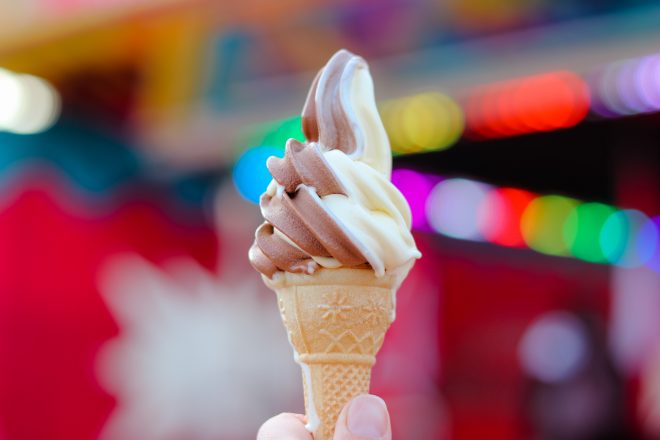
You might be surprised to learn that ice cream is an all year round favourite in Iceland no matter the weather. Ice cream shops are everywhere and they know what they’re doing.
Most places offer several different flavours of soft-serve ice cream which you can have dipped in your sauce of choice and covered in confectionery. “Gamli ís”, or “old ice cream”, is a type of soft-serve made with milk instead of cream giving it a delicate taste and more crystalline texture.
One recommendation to truly experience Icelandic ice cream like a local is to order a “bragðarefur”. The word confusingly translates to both “tasty fox” and “trickster”. This cunning treat consists of your ice cream of choice mixed with three bespoke toppings, creating the ultimate ice cream extravaganza. You will not be disappointed.
Icelanders believe the three toppings you choose to include in your bragðarefur say a lot about your character. So choose wisely!
Candy and Chocolate in Iceland

I could write a whole article could about confectionary in Iceland. Icelanders are so enamoured with sweeties that they have designated Saturdays as “Nammidagur” or “Candy Day”. On Nammidagur, you get 50% off assorted mixes, paid for in weights at local shops and supermarkets. And that’s every Saturday. So how’s that for a local secret?
One thing to know about Icelandic candy is that it is very reliant on liquorice. This soft, sweet and salty treat is often a divisive topic amongst foreigners. Even if you think you don’t like liquorice, we highly recommended that you try Iceland’s national obsession. You might be sweetly surprised.
“Þristur” and “Draumur” are all-time chocolatey favourites and often serves as a gateway treat into appreciating the world of Icelandic liquorice. If you want to indulge like a true Icelander, “Opal” and “Tópas” are more medicinal flavoured liquorice candies that many use as a substitute for chewing gum. You can also sample these unique flavours in the form of schnapps, served in almost every bar as a shot.
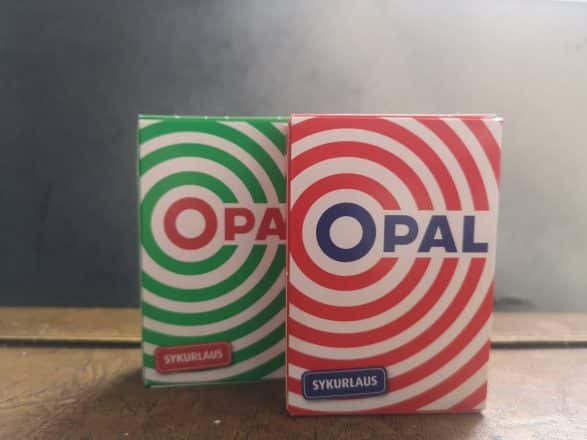
Iceland’s largest chocolate manufacturer is Nói Sírius and they offer a wide variety of delicious goodies. These include Nóa Kropp, chocolate-covered crunchy orbs, and the classic, “Rjómasúkkulaði”, which is chocolate made with cream instead of milk, available in many different flavours.
When it comes to carbohydrates, Icelanders really know what they are doing. The national enthusiasm for all things sweet has led to a form of mastery in the native production of chocolates, ice cream, pastries, and candy. So, be sure to pack your sweet tooth and leave some space in your suitcase to take some sweet treats home with you.
Supermarkets in Iceland

If you’re looking to self-cater during your visit to Iceland, there are several different supermarkets to choose from. The largest franchise throughout the country is Bónus and it’s also the cheapest. You can spot a Bónus by its distinctive logo of a pink piggy bank on a yellow background.
There are other supermarkets, of course, such as Krónan, Nettó, Iceland (the irony is not lost on us) and Hagkaup. Their prices generally go in that same order from cheapest to most expensive.
One tip is to not do any large amount of shopping at a 10/11, Krambúðin, or a smaller convenience store as your total is likely to soar, even for the basics.
Food in Iceland – Summary
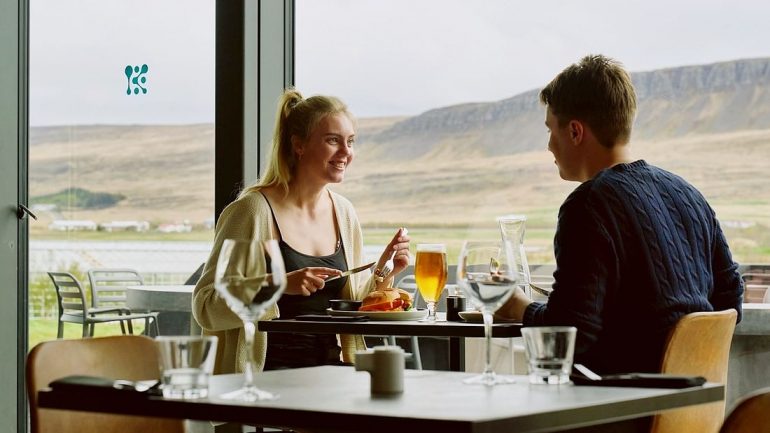
You are sure to find something you like to eat in Iceland, so you won’t have to settle for rotten shark or pickled rams testicles. Fish, lamb, and hot dogs are the nation’s specialities, but you will also find hamburgers, pizzas, and even vegetarian and vegan restaurants here.
Ice cream is good no matter what time of the year it is, and you should definitely try some Icelandic liquorice while here.



